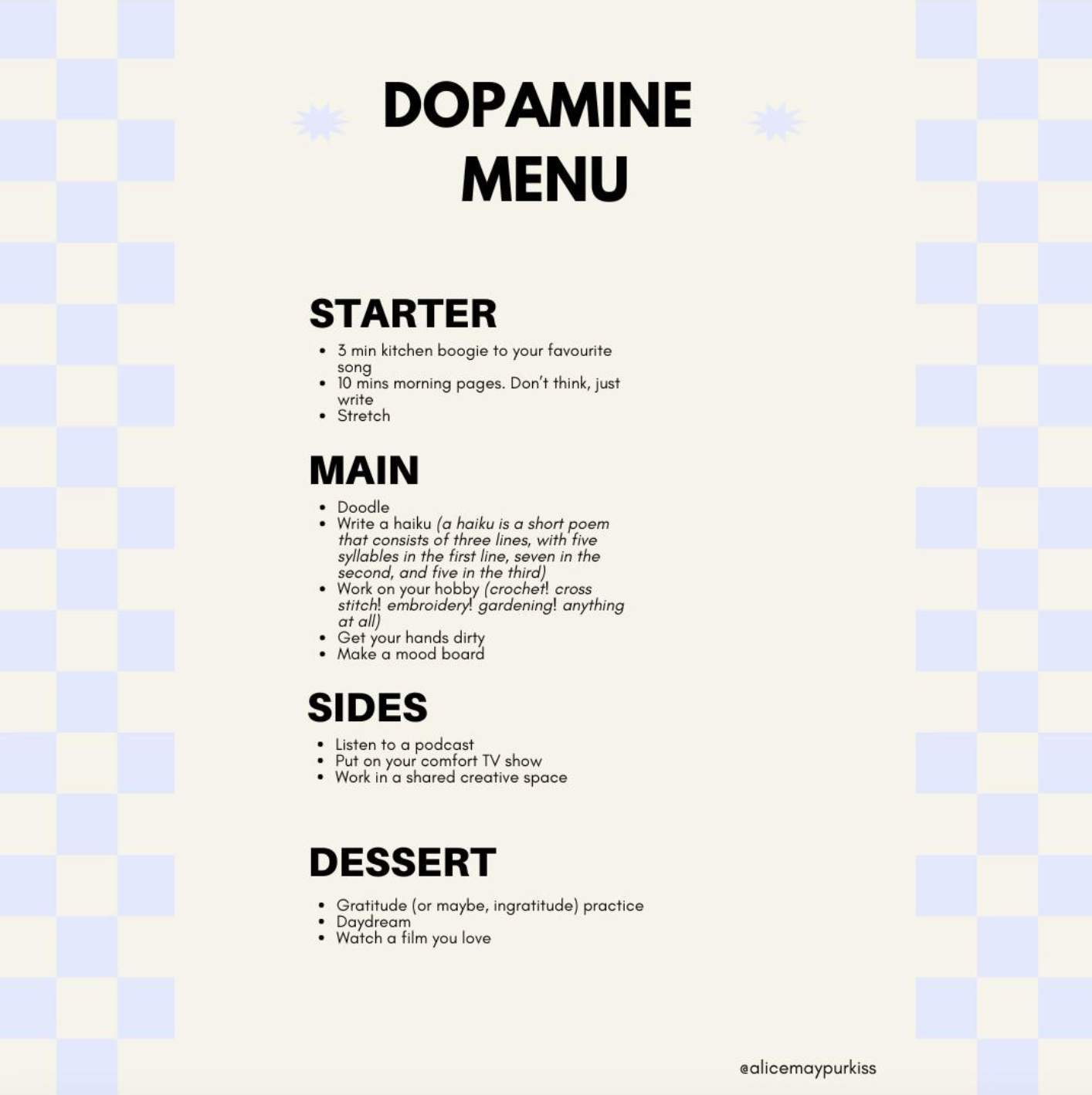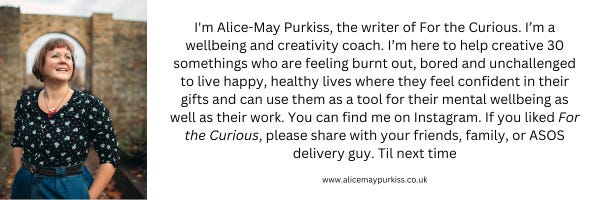We’ve all felt it. That gentle, or in some cases not so gentle, pull to pick up our phones and immerse ourselves in something mindless for a few minutes. Sometimes that few minutes turns into an hour. Or longer even. Then we put down our phones and suddenly we’re left feeling deflated, deregulated and, sometimes, a little depressed. It doesn’t take us long to reach for our devices again.
The reason? Social media has been cleverly designed to help us get little hits of dopamine. Dopamine is a type of chemical in the brain, also called a neurotransmitter. Neurotransmitters act as messengers within the brain and body. This chemical is responsible for all sorts - including feelings of pleasure and reward, regulating mood and emotion, reinforcing learning and memories, regulating our hormones and enhancing attention and focus. Social networks and our phones are all designed to keep us coming back to them - and they do that by triggering these bursts of dopamine when we get something our brain perceives as a reward.
But as with most things - we can replace these not so healthy hits with better alternatives. The challenge is identifying them in advance so when the urge to scroll shows up, we can say “nah sis. I’m going to do this instead”.
Enter: The Dopamine Menu.
If, like me, you're someone who often finds themselves scrolling out of boredom, a dopamine menu can help you nip your never-ending screentime habit in the bud by supporting you with things to make your days more joyful, rather than less.
Scrolling is a habit many of us can't kick. In the UK we average six hours and 40 minutes of screen time a day. The reason we repeat the ritual of browse, scroll, browse, scroll is because your body is craving those bursts of dopamine we’ve become so used to.
The idea of a dopamine menu is to replace the time you spend down a mindless TikTok void with things that make you feel better. Whenever you do an activity you enjoy or do a rewarding task, your brain releases dopamine. And we can trigger that by choosing to do those things when we have the urge to reach for our phones. It’s a curated list of activities that will provide a dopamine boost whenever you need it and it reminds you you don’t need to reach for your phone. You can find joy in other places.
A dopamine menu typically features five sections (or courses). Starters are small, quick tasks that give you a lil burst when you need it. Mains are activities that are the most fulfilling and rewarding. The big dopamine hitters. Sides are the things you can do alongside other tasks. Dessert are the little enjoyable tidbits. And you can also add specials - things you might not do so frequently but you know can be useful. Getting your nails done might be a special, exercising might be a main. But having this list can be so useful when we're scrabbling around for things to do instead of doomscrolling.
Here’s an example of a dopamine menu with a creative focus.
Making Your Own Dopamine Menu
What are some quick things you love to do that only take a couple of minutes? Maybe it’s dancing around the kitchen, maybe it’s giving your pet a cuddle, maybe it’s having a snack or doing star-jumps for a minute. These are your starters. The idea of these is that they’re quick bursts of joy-bringing activities that you can turn to multiple times a day, whenever you need a break. Anything quick that gives you a tiny dose of contentment works for this section of the menu.
Then we’ve got the big guys. The main event. Your main course. These are longer activities that you may need to plan and carve time out for. But because they’re bigger, the idea is they’ll sustain you for longer. Your main courses might be a date with a friend, pulling on your boots and heading for a long walk, taking the time to cook yourr favourite meal, or doing something creative.
Sides are the things you can fit in around other activities. Usually they’re accompaniments to things that might otherwise be a bit bland or incomplete. Think listening to a podcast while you do your chores, watching your comfort TV programme while you tidy up, doing invoices from a shared work space, reading a Substack while you take some deep breaths. They’re designed to add a lil somethin’ somethin’ to your day.
Every good meal needs a dessert. The general idea of desserts on a dopamine menu are things that you might want to do in moderation. They’re not “bad” or wrong necessarily, but finding the appropriate balance to enjoy them is key. They’re the sweet treat you can look forward to on occasion - like daydreaming (best not done when your boss is nearby), binge watching seven episodes of your favourite TV show without coming up for air or succumbing to a 10 min social scroll.
And then you’ve got your specials. Things that aren’t always available but are pretty bloody exceptional when you get to do them. Booking a trip to Paris to go to the Louvre. Buying tickets to a gig you’ve had your eye on for ages. Taking a trip to the theatre. Getting your nails done. Bigger ticket items that are truly nourishing.
Why does it work?
We know scrolling on our phones isn’t a good or healthy use of our time but we do it anyway. A dopamine menu aims to break the habit, to retrain the muscle that tells you to reach for your phone tell you to do something else instead.
Mindless activities like doomscrolling may give you a surge in dopamine initially, but over time their effects diminish. The stimulation they provide doesn’t actually satisfy the need for the dopamine hit.
A study in the Journal of Neuroscience showed that we’re more likely to repeat activities when we receive a high concentration of dopamine. That’s why it’s so easy to get addicted to our phones, snacking late at night or bingeing Netflix. But a dopamine menu gives you a list of healthy, sustainable alternatives that offer long-lasting dopamine effects. Exercising, hanging out with friends, or dancing and listening to music provide increases in dopamine over a sustained period of time. They’re the antidote to short bursts of dopamine you might get from your phone, or other less healthy, less satisfying activities.
What should be on mine?
A good dopamine menu is entirely tailored to you and your needs. What works for one person might not work well for another. Start by writing down things that bring you joy, then start to figure out how long each of those activities take. When you’ve done that, think about which ones work with your lifestyle currently. Something that brings you joy might be travelling to far flung countries, but it might not be something you can tap into right now. That can go on the ‘specials’ and be a goal you start to work towards. Remember a dopamine menu isn’t a fixed document. It can - and should! -change and evolve like you do. There’ll be some things that are always on it and others that are only there for a season.
Once you’ve made decisions about what’s going on the menu, make it look pretty. Design it up on Canva or use a favourite notebook and felt tip pens to make it into something you want to look at. Then leave it somewhere you’ll see it and be reminded of all the many things in your life that bring you joy beyond the little electronic comparison box we carry round with us everywhere we go.
Creating a dopamine menu is just one of the types of activities you’ll get if you work with me on my Creative Calm programme. Whatever you’re bringing to the table - from confidence to using your strengths and living to your values - we’ll use creative activities to unpick. It’s coaching with a creative edge which helps you tap into ways to use your own creativity as a mental maintenance tool. Want to hear more? Book a 30 min discovery call with me or find out more about how we can work together.





